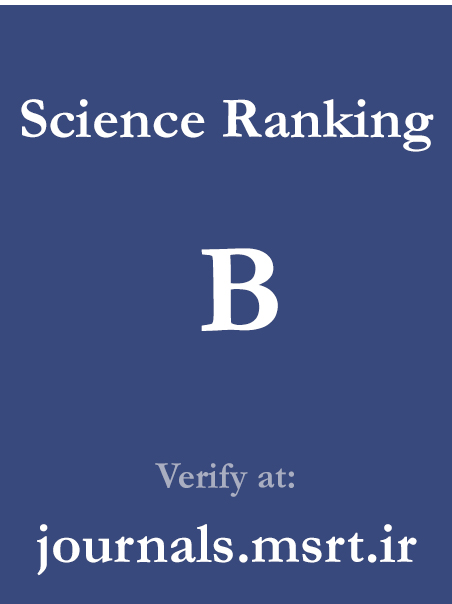Identifying the Components and Indicators of Internal Branding in Nonprofit Organizations in Iraq
Keywords:
Component identification, internal branding, nonprofit organizations, Iraq, phenomenological methodAbstract
The aim of this study is to discover the components and indicators of internal branding in nonprofit organizations in Iraq. This research adopts an interpretivist philosophy, an inductive approach, a qualitative method, and a phenomenological strategy. The qualitative study population includes managers and employees of nonprofit organizations in Iraq engaged in charitable and benevolent activities who have at least 10 years of experience in branding and internal branding within these organizations, and who also possess sufficient awareness and knowledge of the foundations and principles of internal branding. The sampling method in this research is non-random and purposive. Data collection was conducted through semi-structured interviews. According to the qualitative content analysis conducted, internal branding in nonprofit organizations comprises 11 components, 40 categories, and 342 codes. These 11 components include: employees’ internal communication with the brand, brand goal identification, brand commitment influenced by human resources, creation, recognition, understanding, and transfer of brand value by human resources, brand perception by organizational employees, alignment and value congruence of human resources with the brand, employee support for the brand, brand identity formation and transfer of brand objectives to human resources, brand clarification by employees, brand-consistent behaviors, and extra-role brand-consistent behaviors by human resources. The findings emphasize that while general principles of internal branding are applicable in Iraq, the country’s specific conditions necessitate localized strategies. Notably, the shortage of resources frequently observed in many nonprofit organizations in Iraq, combined with the significant role of informal relationships among employees—a prominent feature of Iraq’s collectivist culture—require that conventional branding approaches be adapted to local needs. This study partially addresses this necessity through its findings.
Downloads
References
Al-Hashemi, H. A. A. (2023). Evaluating the role of artificial intelligence and machine learning technologies in developing and improving the quality of electronic financial disclosure. https://www.researchgate.net/publication/375224158_Evaluating_the_role_of_artificial_intelligence_and_machine_learning_technologies_in_developing_and_improving_the_quality_of_electronic_financial_disclosure
Al-Mansour, M. (2022). Treatment landscape of relapsed/refractory mantle cell lymphoma: an updated review. Clinical Lymphoma Myeloma and Leukemia, 22(11), e1019-e1031. https://doi.org/10.1016/j.clml.2022.07.017
Azizi, S., & Naeli, M. (2024). Internal Marketing Mix Operationalization: A Review of the Literature. https://doi.org/10.1007/978-3-031-62967-9_9
Brown, D. M., Apostolidis, C., Dey, B. L., Singh, P., Thrassou, A., Kretsos, L., & Babu, M. M. (2024). Sustainability starts from within: A critical analysis of internal marketing in supporting sustainable value co-creation in B2B organisations. Industrial Marketing Management, 117, 14-27. https://doi.org/10.1016/j.indmarman.2023.12.006
Burmann, C., & Zeplin, S. (2005). Building brand commitment: A behavioural approach to internal brand management. Journal of Brand Management, 12, 279-300. https://doi.org/10.1057/palgrave.bm.2540223
De Chernatony, L. (2002). Would a brand smell any sweeter by a corporate name? Corporate Reputation Review, 5(2), 114-132. https://doi.org/10.1057/palgrave.crr.1540169
Durgee, J. F. (2016). Exploring what nonprofit branding can learn from contemporary art. International Journal of Nonprofit & Voluntary Sector Marketing, 21(2), 73-81. https://doi.org/10.1002/nvsm.1543
Garg, E., Swami, S., & Sunita, K. M. (2019). Branding effectiveness measurement in non-profit environment. Journal of Advances in Management Research, 16(1), 4-22. https://doi.org/10.1108/jamr-05-2018-0039
Gonçalves, J. S., Neves, M. S., Sousa, B. B., & Ferreira, J. (2024). The Importance of Internal Marketing in Companies and Its Relation With Happiness at Work. https://doi.org/10.4018/979-8-3693-1802-7.ch008
Graham, B. Z., & Cascio, W. F. (2018). The employer-branding journey. Management Research: The Journal of the IberoAmerican Academy of Management, 16(4), 363. https://doi.org/10.1108/mrjiam-09-2017-0779
Hankinson, G. (2001). Location branding: A study of the branding practices of 12 English cities. Journal of Brand Management, 9, 127-142. https://doi.org/10.1057/palgrave.bm.2540060
Hou, J., Du, L., & Tian, Z. (2009). The effects of nonprofit brand equity on individual giving intention: Mediating by the self-concept of individual donorJO - International Journal of Nonprofit & Voluntary Sector Marketing. 14(3), 215-229. https://doi.org/10.1002/nvsm.356
Johansen, M. S., & Sowa, J. E. (2019). Human resource management, employee engagement, and nonprofit hospital performance. Nonprofit Management & Leadership, 29(4), 549-567. https://doi.org/10.1002/nml.21352
Keler, Ş. A. (2007). Portföy yönetiminde yeni açılımlar ve dinamik portföy yönetimi olarak hedge fon yönetimi Marmara Universitesi (Turkey)]. https://acikbilim.yok.gov.tr/handle/20.500.12812/482399
Keller, E. (2007). Unleashing the power of word of mouth: Creating brand advocacy to drive growth. Journal of Advertising Research, 47(4), 448-452. https://doi.org/10.2501/S0021849907070468
King, C., & Grace, D. (2008). Internal branding: Exploring the employee's perspective. Journal of Brand Management, 15, 358-372. https://doi.org/10.1057/palgrave.bm.2550136
King, C., & Grace, D. (2012). Examining the antecedents of positive employee brand‐related attitudes and behaviours. European Journal of Marketing, 46(3/4), 469-488. https://doi.org/10.1108/03090561211202567
Liu, G., Ko, W. W., & Chapleo, C. (2017). Managing employee attention and internal branding. Journal of Business Research, 79, 1-11. https://doi.org/10.1016/j.jbusres.2017.05.021
Mills, & Mangold, M. (2004). Kundenerlebnis als Wettbewerbsvorteil. Gabler. https://www.lehmanns.de/shop/wirtschaft/24497270-9783322903228-kundenerlebnis-als-wettbewerbsvorteil
Morbach, J., Wiesner, A., & Marquardt, W. (2009). OntoCAPE-A (re) usable ontology for computer-aided process engineering. Computers & chemical engineering, 33(10), 1546EP - 1556. https://doi.org/10.1016/j.compchemeng.2009.01.019
Morbach, S., Müller, E., Reike, H., Risse, A., Rümenapf, G., & Spraul, M. (2009). Diagnostik, Therapie, Verlaufskontrolle und Prävention des diabetischen Fußsyndroms. Diabetologie und Stoffwechsel, 4(05), 301-325. https://doi.org/10.1055/s-0029-1224622
Peña Florez, L. A., & Rodríguez-Rojas, Y. L. (2018). Procedimiento de evaluación y selección de proveedores basado en el proceso de análisis jerárquico y en un modelo de programación lineal entera mixta. Ingeniería, 23(3), 230-251. https://doi.org/10.14483/23448393.13316
Piehler, R. (2018). Employees' brand understanding, brand commitment, and brand citizenship behaviour: a closer look at the relationships among construct dimensions. Journal of Brand Management, 25(3), 217-234. https://doi.org/10.1057/s41262-018-0099-z
Piehler, R., & King, A. M. (2018). Employees' brand understanding, brand commitment, and brand citizenship behaviour: a closer look at the relationships among construct dimensions. Journal of Brand Management, 25(3), 217-234. https://doi.org/10.1057/s41262-018-0099-z
Punjaisri, K., Evanschitzky, H., & Wilson, A. (2009). Internal branding: an enabler of employees' brand‐supporting behaviours. Journal of Service Management, 20(2), 209-226. https://doi.org/10.1108/09564230910952780
Riley, F. D., Singh, J., & Blankson, C. (2016). The Routledge Companion to Contemporary Brand Management: Vol. 1 edition. Routledge. https://www.researchgate.net/publication/337494466_The_Routledge_companion_to_contemporary_brand_management
Sarangal, R. K., Nargotra, M., Singh, R., & Singh, G. (2024). Internal Marketing, Faculty Engagement, and Innovative Behavior: An Empirical Study in Higher Education. Jindal Journal of Business Research. https://doi.org/10.1177/22786821241237025
Sharafi Behrouz, A. (2023). Investigating the Impact of Internal Marketing and Entrepreneurial Orientation on the Innovative Performance of Businesses. Tenth International Conference on Interdisciplinary Research in Management, Accounting, and Economics in Iran, Tehran. https://en.civilica.com/doc/1777471/
Shi, Y., Jang, H. S., Keyes, L., & Dicke, L. (2020). Nonprofit service continuity and responses in the pandemic: Disruptions, ambiguity, innovation, and challenges. Public Administration Review, 80(5), 874-879. https://doi.org/10.1111/puar.13254
Taheri, M., & Haji, Z. (2023). Examining the Impact of Internal Marketing and Organizational Learning on Employee Performance Improvement with the Mediating Role of Organizational Innovation (Case Study: Small and Medium Enterprises in Tehran). Knowledge-Based Business Management, 3(27), 63-89.
Walter, W. P., & Patricia, B. (2020). The Nonprofit Sector: A Research Handbook, Third Edition. Stanford University Press. https://doi.org/10.1515/9781503611085
Wymer, W., Gross, H., & Helmig, B. (2016). Nonprofit brand strength: What is it? how is it measured? what are its outcomes? Voluntas: International Journal of Voluntary & Nonprofit Organizations, 27(3), 1448-1471. https://doi.org/10.1007/s11266-015-9641-8
Downloads
Published
Submitted
Revised
Accepted
Issue
Section
License
Copyright (c) 2025 Amjad Salem Abdoulsadeh Jaberi (Author); Yaghoob Maharati (Corresponding author); Azar Kaffashpoor , Ghasem Eslami (Author)

This work is licensed under a Creative Commons Attribution-NonCommercial 4.0 International License.







